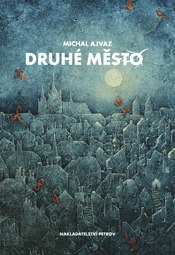I gave my Australian
artist friend a tour of the more unknown treasures of the Czech
Republic and Litomysl's Portmoneum had to be on the list of stops.
From the outside the Portmoneum is a humble single-storey house on a
back street in Litomysl, but oh boy what wonders await you inside!
The story of the
Portmoneum is the story of two men: one the artist Josef Vachal and
the other, Josef Portmon, a teacher and a collector of art especially
Vachal's. Portmon's collecting fervour bordered on the obsessive and
eventually his demands on Vachal put such a strain on the
relationship that the older man wanted nothing more to do with his
admirer. In the Portmoneum we benefit from that fervour, for how many
collectors would invite an artist to decorate every surface of two
rooms in their small house – ceiling, walls and all the furniture?
Even then it was not enough for Portmon who sought to commission
more, but Vachal refused.
It is quite impossible
to fully describe the impact of the Portmoneum. Vachal's art is
vibrant, full of strong colours, metaphor and spirituality. Created
in the early 1920s Portmoneum's expressionism stems from the Art
Nouveau movement, but it both looks back at the Baroque and forward
to today. In this his greatest work Vachal manages to combine a sense
of humour with profound psychological depth. There is so much going
on in the art, which literally surrounds the viewer, that it is
impossible to take it all in.
Vachal has a very
contemporary appeal. However it was not always so. Obviously his
spirituality did not sit easily with Communism, so it was not until
the late 1960's that his reputation began to recover. Even so the
Portmoneum suffering from water damage was allowed to decline until
the 1990's, when at last restoration began. I have visited twice and
on both occasions we found ourselves alone to enjoy Vachal's amazing
work.
If you want to own a Vachal, it is quite possible to do so, as he also produced ex libris. Here is one from my collection:



![By Nelliette (Own work) [CC BY-SA 3.0 (http://creativecommons.org/licenses/by-sa/3.0)], via Wikimedia Commons](https://blogger.googleusercontent.com/img/b/R29vZ2xl/AVvXsEgPgT9sYCS1bye8Q4DUGL4aYBB9cYNCq4hQVw09QbAYRquNYI8LJlFlc9qZXOK1SwadJiK_8EgJ4CP0StHjcd2CLOjRXdx66Bmor6LtfInyNx6Z4R2vtqy_NeOYarVeTQeNhn2Xwn8C8vQ/s320/benes+stamp.jpg)









